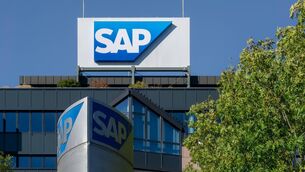Teagasc figures confirm the sad farming story
The income statistics highlight once again that farmers have been left behind by the Celtic Tiger and have become victims rather than beneficiaries of the economic growth phenomenon of the past decade. Like the rest of us, the cost of living and the cost of doing business have increased dramatically for farmers over the past decade, but unlike the rest of us, farmers have had to live with downward pressure on most of what they produce.
In 2006, the average family farm income amounted to just €16,680. Within this, the average full-time farmer on a family farm earned an income of €34,486, while the average income for part-time farmers was just €7,899. Furthermore, the average family farm depended on the single farm payment for 98% of its income, and in 58% of all farms, either the farmer and or the farmer’s spouse, had an off-farm job.
Small wonder that many farmers look at the lifestyles of many other sectors of our economy with a mixture of anger and envy.
The one thing that farmers have going for them is that the value of the asset they hold has increased dramatically in recent years.
Much of the demand for land in recent years has been driven by farmers who have sold development land near towns and cities, and hobby farmers who are moving out from urban areas to enjoy a better quality of life. The bottom line for both of these categories is that they can afford to pay well above the agricultural price for the land and they have certainly done so.
For commercial farmers who believe that the only way forward is to try and attain as much scale as possible, the reality is that they have been priced out of the market by people who can afford to pay ridiculous prices for land. The other issue of course is that it is one thing sitting on a very valuable asset, but if it does not generate a meaningful income, it is pretty useless.
These asset-rich and income-poor farmers have sought to address this quandary by engaging in off-farm investment in order to generate some income. Small wonder that farmers have become a prime target for those in the business of flogging foreign properties, or stockbrokers who have assured them of the benefits of investing in equity markets using high-risk instruments such as CFDs (contracts for difference).
A few farmers who have been badly burned by CFD investments explained themselves simply saying that desperate people often do desperate things.
Despite the sharp rise in milk and tillage prices in recent months, the reality is that many farmers are now under serious pressure — but policy makers don’t appear to give a damn.
The issue with Brazilian beef is a case in point. It has been conclusively proven that the conditions under which some Brazilian beef is produced would be totally unacceptable in the EU. Yet under the aegis of the WTO, Brazilian beef is flooding into the EU.
There is a serious case of inconsistency at play, but nobody of significance seems to care. The health of EU consumers and the livelihood of EU farmers are to be sacrificed on the altar of so-called free trade.
Free trade should mean that the same standards apply to everybody but in relation to food production this is certainly not the case.
The banning of GM feed products is another case in point. The bottom line is that Irish farmers are being taken for a total ride, but hopefully a touch of food scarcity over the coming years might just reverse the pendulum.














